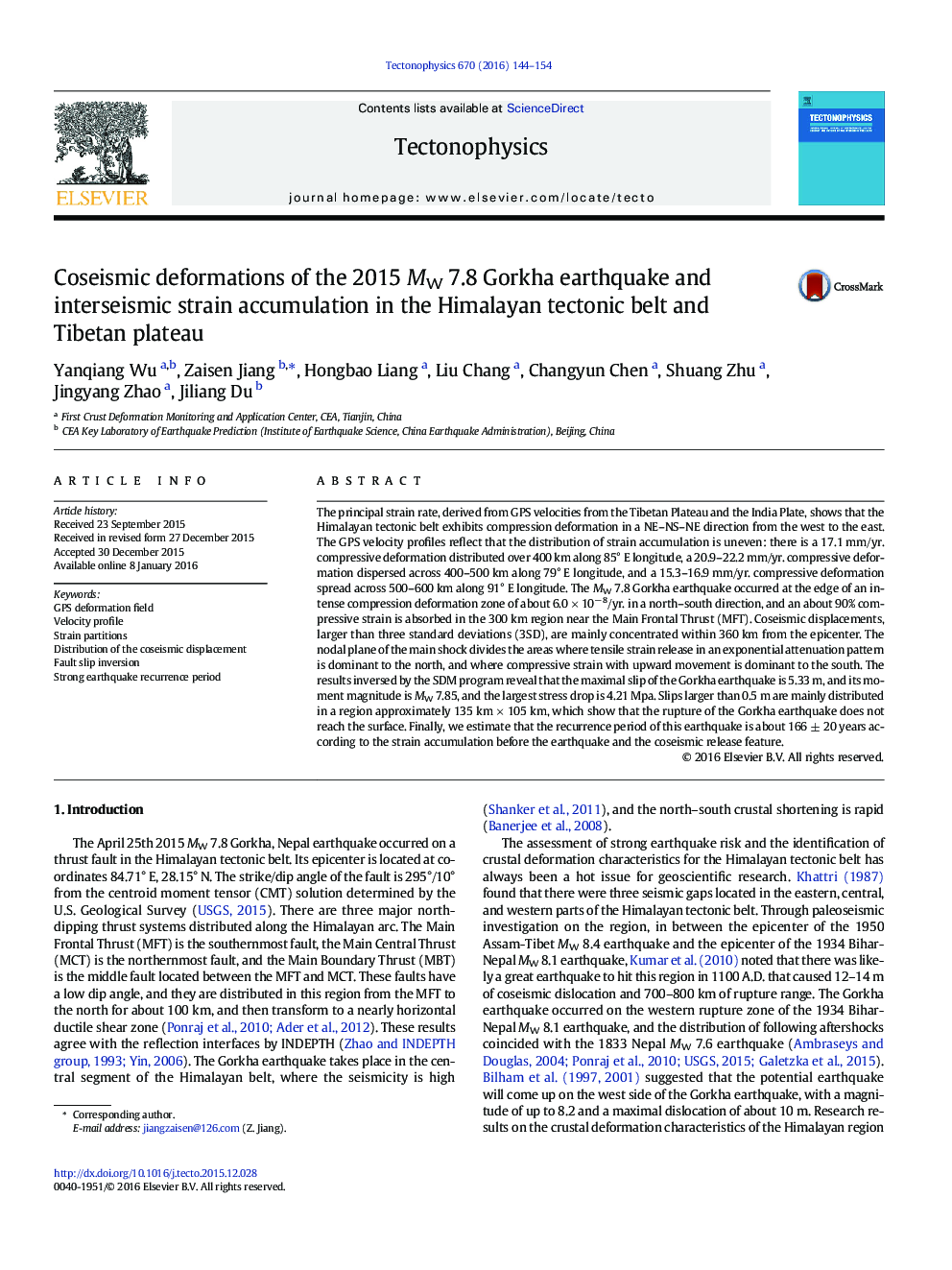| کد مقاله | کد نشریه | سال انتشار | مقاله انگلیسی | نسخه تمام متن |
|---|---|---|---|---|
| 4691378 | 1636726 | 2016 | 11 صفحه PDF | دانلود رایگان |

• Principal strain rates show NE–NS–NE from the west to the east along the Himalayas.
• The MW 7.8 Gorkha epicenter is located at the edge of an intense compressive zone.
• Slips larger than 0.5 m are mainly distributed in a region 135 km × 105 km.
• The rupture of the Gorkha earthquake does not reach the surface.
• The recurrence period of the MW 7.8 Gorkha earthquake is about 166 ± 20 years.
The principal strain rate, derived from GPS velocities from the Tibetan Plateau and the India Plate, shows that the Himalayan tectonic belt exhibits compression deformation in a NE–NS–NE direction from the west to the east. The GPS velocity profiles reflect that the distribution of strain accumulation is uneven: there is a 17.1 mm/yr. compressive deformation distributed over 400 km along 85° E longitude, a 20.9–22.2 mm/yr. compressive deformation dispersed across 400–500 km along 79° E longitude, and a 15.3–16.9 mm/yr. compressive deformation spread across 500–600 km along 91° E longitude. The MW 7.8 Gorkha earthquake occurred at the edge of an intense compression deformation zone of about 6.0 × 10− 8/yr. in a north–south direction, and an about 90% compressive strain is absorbed in the 300 km region near the Main Frontal Thrust (MFT). Coseismic displacements, larger than three standard deviations (3SD), are mainly concentrated within 360 km from the epicenter. The nodal plane of the main shock divides the areas where tensile strain release in an exponential attenuation pattern is dominant to the north, and where compressive strain with upward movement is dominant to the south. The results inversed by the SDM program reveal that the maximal slip of the Gorkha earthquake is 5.33 m, and its moment magnitude is MW 7.85, and the largest stress drop is 4.21 Mpa. Slips larger than 0.5 m are mainly distributed in a region approximately 135 km × 105 km, which show that the rupture of the Gorkha earthquake does not reach the surface. Finally, we estimate that the recurrence period of this earthquake is about 166 ± 20 years according to the strain accumulation before the earthquake and the coseismic release feature.
Journal: Tectonophysics - Volume 670, 22 February 2016, Pages 144–154